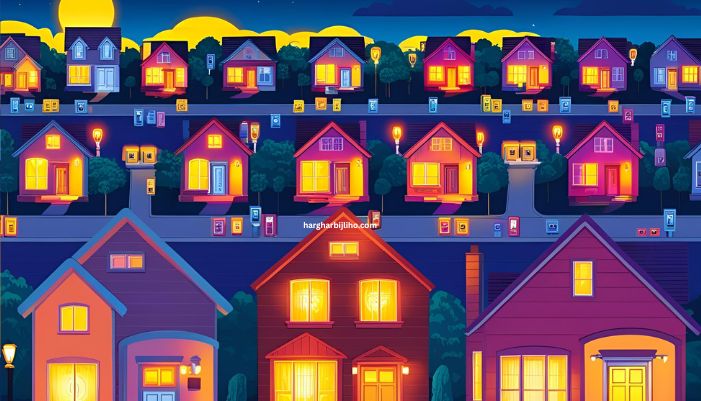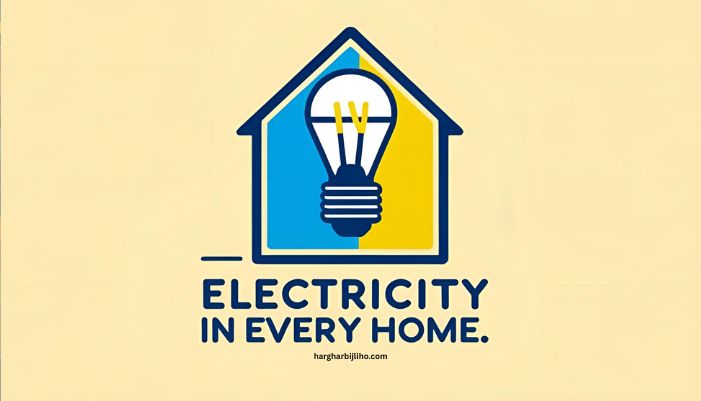For decades, millions of Indian families lived without electricity. No lights, no fans, no way to charge phones or run basic appliances. The Har Ghar Bijli scheme set out to fix that.
Launched in 2017, this national initiative has one clear aim: ensure every home in India has access to electricity, regardless of income, location, or social background. With its massive reach and real-world impact, Har Ghar Bijli is transforming lives across the country.
What is Har Ghar Bijli?
Har Ghar Bijli, meaning “Electricity to Every Home,” is part of the Saubhagya Yojana (Pradhan Mantri Sahaj Bijli Har Ghar Yojana). This flagship mission was launched by the Ministry of Power to connect all unelectrified households to the electricity grid.
The scheme targets both urban and rural areas, with a focus on poor and remote communities. For families living Below the Poverty Line (BPL), electricity connections are provided free of cost.
How the Scheme Works
The process begins with a survey by local electricity distribution companies (DISCOMs). These teams identify unelectrified homes and provide new connections, including wiring, meters, and switches.
Where grid-based power isn’t possible—such as in deep forests, tribal regions, or islands—families receive solar-based solutions, ensuring that no household is left behind.
Citizens can check their status or apply through the Saubhagya portal or mobile app, making access easier and transparent.

Achievements Since Launch
Since its inception, Har Ghar Bijli has made tremendous progress. By 2021, over 99% of identified households had received electricity connections. As of 2025, more than 28.6 million homes across India have benefited.
States like Jharkhand, Bihar, Uttar Pradesh, and Chhattisgarh saw significant improvement. Even in hard-to-reach regions, creative off-grid solutions were used to extend power access.
A digital monitoring tool—the Saubhagya Dashboard—tracks real-time updates on connections and project status, ensuring data transparency and accountability.
Social and Economic Impact
Electricity doesn’t just power homes—it powers progress. After receiving connections, households reported major improvements in quality of life. Children can now study after dark. Families no longer rely on smoky kerosene lamps.
Women, especially in rural areas, benefit greatly. With lighting, fans, and basic appliances, their daily chores are easier, and many can even start home-based work.
Healthcare centers now operate longer hours and store essential medicines. Schools use digital learning tools. Small businesses can stay open after sunset, leading to more income.
In short, Har Ghar Bijli supports education, health, safety, income, and overall social development.
Key Challenges
Despite its success, the mission has not been without challenges. Some homes still experience frequent outages, especially in rural belts. Voltage fluctuations, aged infrastructure, and delayed maintenance affect service quality.
Affordability is another concern. While connections are free for BPL families, monthly usage bills can still burden low-income households, leading some to limit electricity use or fall behind on payments.
Reaching extremely remote areas—like hilly villages or flood-prone regions—also slows progress due to infrastructure difficulties.
The 2025 Vision: Beyond Access
With electrification nearly complete, the focus in 2025 is shifting to reliable, round-the-clock power and clean energy adoption.
Healthy Organic: The Path to a Better Lifestyle
✅ Rooftop Solar Expansion
The PM Surya Ghar Muft Bijli Yojana now aims to equip 1 crore homes with free rooftop solar panels, helping families cut electricity costs and support sustainable energy.
✅ Smart Metering
Smart meters are being deployed to help families track usage, reduce billing errors, and enable prepaid plans.
✅ DISCOM Strengthening
Under UDAY 2.0, reforms are helping power distribution companies reduce losses and upgrade systems, ensuring long-term supply reliability.
Conclusion
Har Ghar Bijli stands as one of India’s most successful development missions. It has brightened homes, empowered communities, and opened doors to opportunity for millions.
While challenges remain, the journey from darkness to light is nearly complete. With solar power, smart grids, and continued government focus, India is not just lighting homes—it’s powering dreams.



